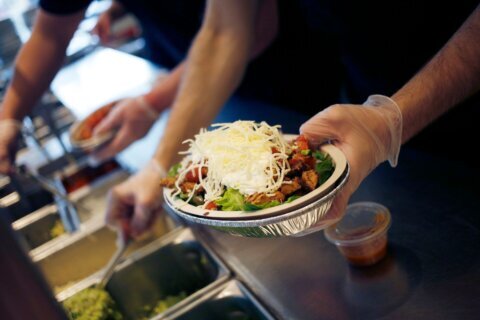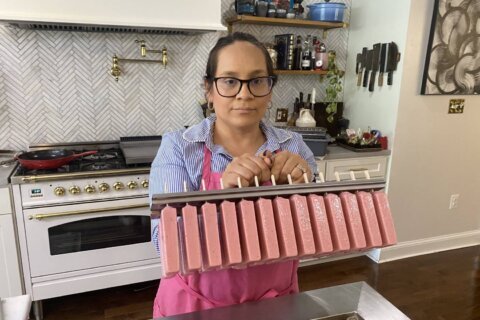WASHINGTON — There’s a new meat making its way onto the plates of Americans — only it isn’t new at all. It’s thought to have been one of the earliest domesticated animals, and it’s a staple protein in several cuisines and cultures around the world, but for many Americans, goat is new.
Jeff Tunks hopes the red meat isn’t a novelty for too long. The executive chef and owner of Passion Food Hospitality is confident that with a little help from house-made corn tortillas, he can introduce goat to the masses with his Jalisco-style roasted goat tacos at Fuego Cocina y Tequileria.
And Tunks isn’t the only chef in the D.C. area putting goat on the menu. Mike Isabella serves spiced baby goat with savoy cabbage, black-eyed peas and red pepper at Kapnos and a wood-roasted spiced baby goat sandwich at G Sandwich Shop. And at The Fainting Goat, on U Street, diners can try a curried goat po-boy or a plate of gnocci covered in a goat Bolognese. Berkeley, California’s, renowned Chez Panisse and Chicago’s Girl and the Goat also embrace the meat, The Wall Street Journal reports.
The United States Department of Agriculture says goat consumption is on the rise in the U.S. In 1984, the agency, which is responsible for inspecting all meat slaughtered for sale, inspected 107,299 goats. In 2010, that number jumped to 779,000.
Tunks says many factors are driving the consumption of goat. For starters, goat meat is higher in protein than pork, lamb and chicken, and it’s more than 50 percent lower in fat than beef and about 40 percent lower in saturated fat than chicken. Calorie-wise, goat is on par with chicken, but contains significantly fewer calories than beef, pork and lamb.
“Finally, people are realizing it’s nutritious; it’s one of the best proteins for you. It’s low in calories, low in fat,” Tunks says.
More meat-eaters are also trying goat for sustainability reasons. Tunks says that while farmers can raise about two cattle per acre of land, they can raise about 10 goats per acre.
“Plus, they’re like nature’s lawn mowers,” he says. “So they’re easy to raise, they’re sustainable, they’re easy on the land, and I think people are realizing it’s more of a viable option as opposed to cattle or sheep or pork.”
And the options for cooking with goat are endless.
“I think it’s very versatile,” says Tunks, who adds that goat is common in many Middle Eastern, Caribbean and Latin American cultures, so it can easily adapt to myriad flavors. “You could apply it with Asian flavor profiles, with Middle Eastern flavor profiles, with Indian flavor profiles.”
For his Jalisco-style roasted goat tacos, Tunks applies a chile de arbol rub to the meat and slowly braises the hind quarters of the goat for about three hours.
“And so the meat’s very tender, very succulent,” he says. “We serve it with a simple diced white onion and cilantro and then a trio of sauces.”
Tunks gets two goats a week delivered to his restaurant from a farmer in Pennsylvania, but he says the meat can be found at area farmers markers or specialty halal markets. And, he says, it’s relatively easy to prepare at home.
“If you get more of a shoulder or leg cuts, I think a slow braise, like lamb shank or a veal osso buco, would be the best. If you’re getting chops or loin, I think even grilling it, like you would a lamb kabob or a lamb chop, would be great,” Tunks says.
“I think it’s just about us experiencing it and being aware of it.”
Follow WTOP and WTOP Living on Twitter and on the WTOP Facebook page.







